Building a garden tractor that can pull is a fun and rewarding project. It can be done on a budget, and with some basic tools and skills, you can have a tractor that will help you till your garden, move heavy objects, or compete in pulling competitions! In this article, we will answer some of the most common questions about building a pulling garden tractor. We’ll give you tips on choosing the right components, assembling the tractor, and fine-tuning it for optimum performance. Let’s get started!
Differences Between Garden and Pulling Tractors
Tractor is an essential machine on the farm, used for plowing, planting, and harvesting. It is also one of the most dangerous machines to operate. There are two main types of tractors we will need to discuss for the sake of this article: garden and pulling tractor.
Garden tractors are usually powered by gasoline engines and have four-wheel drive for increased traction.Garden tractors can be very useful for those who have large gardens or yards. They can help with tasks such as tilling the soil, removing snow, or hauling firewood. Garden tractors can also be used for recreation, such as pulling a small trailer or sled behind them.

Garden tractors typically have a rear-mounted engine and two or three forward gears. Some models also have reverse gears. Garden tractors are often equipped with attachments such as plows, tillers, snowblowers, and rototillers.
Most garden tractors are powered by gasoline engines. However, some models are available with diesel or electric engines.
A pulling tractor on other hand, is a vehicle that is specifically designed to pull heavy loads. They are usually used in agricultural or construction settings, but can also be used for other purposes such as hauling logs or debris. Pulling tractors typically have a very powerful engine and strong tires that can grip the ground well.
Pulling tractors typically have a stronger engine than regular tractors, and they may also have special tires or other modifications to help them handle the extra weight of the load being pulled.
One of the main advantages of pulling tractors, is how effortless they can make tasks that would otherwise be very difficult or even impossible to do without their help. For example, construction workers often use pulling tractors to move heavy loads of dirt or concrete from one location to another. Farmers also use pulling tractors for tasks such as plowing fields, dragging logs, or hauling hay bales. [1]
What to Consider Beforehand
Building a pulling garden tractor can have many benefits. For example, if you often need to move heavy loads around your property, a pulling garden tractor can make the task much easier. Additionally, if you enjoy working on and customizing machinery, building a pulling garden tractor can be a fun and rewarding project.
Necessary skills
First, it is important to make sure that you have the necessary skills and knowledge to build a tractor. If you are not familiar with engines or mechanical systems, it may be best to seek out some help from someone who is. Additionally, building a tractor can be a time-consuming and expensive endeavor, so be sure to set aside enough time and money to complete the project.
Your budget
Before you begin your project, it is important to consider your budget. Building a pulling garden tractor can be expensive, depending on the materials and parts you use. Make sure to do some research and create a realistic budget for your project.
The size of your garden or yard
Another important factor to consider is the size of your garden or yard.
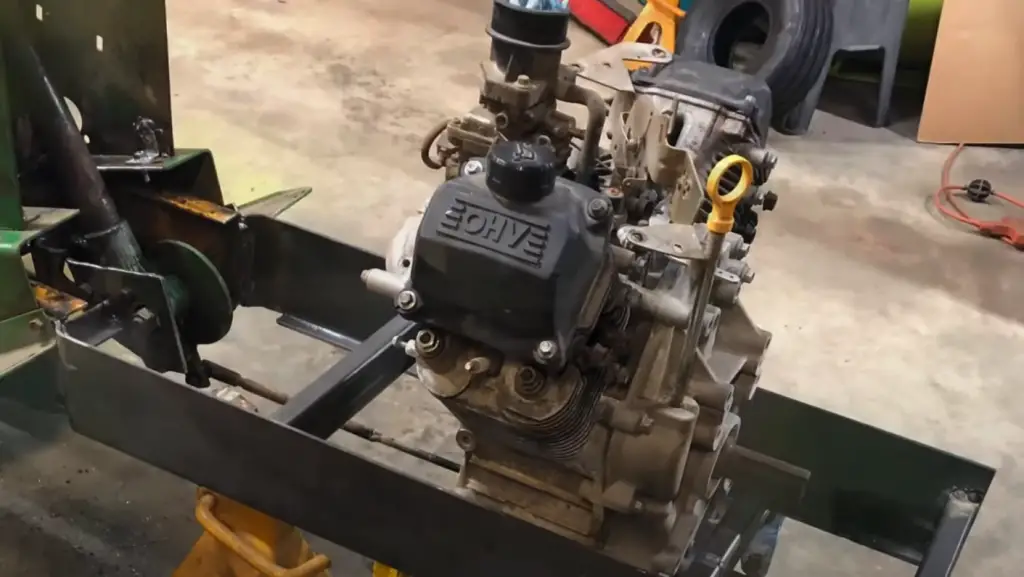
If you have a small garden, you may not need a tractor with as much power or as many features as one that would be used in a larger space. Conversely, if you have a large property, you may want to consider a more powerful model.
Number of pulls you want your tractor to do
Next you will need to consider how often you will need to use your tractor. If you only plan on using the tractor for light duty tasks, such as pulling a small trailer or lawn roller, then a smaller engine may suffice. However, if you anticipate needing to pull heavier loads on a regular basis, then you will need to select an engine that is powerful enough to handle the extra weight.
Safety equipment
Another important consideration is safety equipment. When operating a tractor, it is important to wear the proper safety gear, such as a hard hat, gloves, and protective clothing. Additionally, you should make sure that your tractor is equipped with the proper safety features, such as headlights and turn signals. [1]
How to Build a Pulling Garden Tractor
Now that you have considered all of the factors involved in building a pulling garden tractor, it is time to get started on your project. Below is a step-by-step guide on how to build a pulling garden tractor.
Get a powerful garden tractor
Of course we won’t be building a pulling tractor unless we have a powerful garden tractor to start with. Depending on the size and weight of the materials you will be pulling, as well as the distance you will be pulling them, you will need to make sure your garden tractor is up for the job. A gas-powered garden tractor is usually the best option for a pulling tractor, as they tend to have more power than electric models.
If you are thinking about purchasing a garden tractor, there are a few things you should keep in mind. First, you will need to decide what size tractor you need. Garden tractors come in a variety of sizes, from small to large. Second, you will need to decide what type of engine you want. Gasoline engines are the most common, but diesel and electric engines are also available.
Third, you will need to decide what attachments you want for your tractor. Some common attachments include a plow, lawn roller, or log splitter. fourth, you will need to decide where you will purchase your tractor. Garden tractors can be purchased at most home improvement stores or online retailers.
Rebuild the engine
If you want your garden tractor to be able to pull heavy loads, you will need to rebuild the engine. This is a simple process, but it will require some basic mechanical knowledge. First, you will need to remove the old engine from the tractor. Next, you will need to disassemble the engine and clean all of the parts.
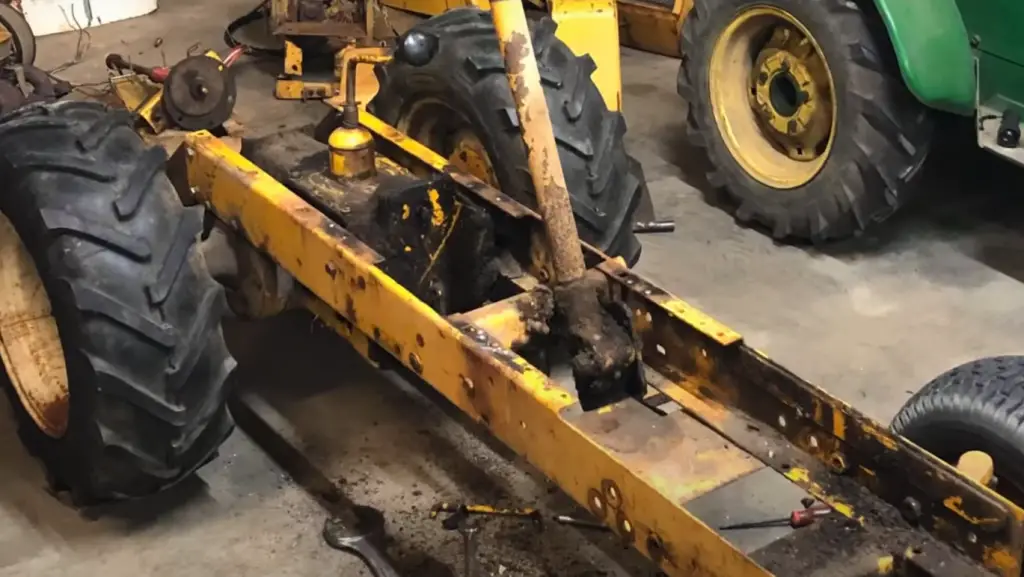
If you want to enhance the performance of your future machine, you will need to focus on replacing the performance parts. This includes turbocharges, racing fuel delivery system and of course valve heads. After you have replaced the old engine with the new one, you will need to reconnect all of the hoses and wires.
Adjust the clutch and the transmission’s gear ratios
The next step is to adjust the clutch and the transmission’s gear ratios. This will ensure that your tractor can handle the weight and stress of pulling heavy objects. To do this, you will need to consult your tractor’s owner’s manual. Once you have adjusted the clutch and transmission, it is time to test them out.
To test the clutch, put your tractor in neutral and rev the engine. The RPMs should increase without the tractor moving forward. If the RPMs decrease or the tractor starts to move forward, then you need to adjust the clutch again.
If you want to, you can replace your clutch with a triple disc clutch. This will give you more power and allow you to pull heavier objects without risking damage to your tractor.the engine.
Modify the wheels and tires
It takes a lot of power to pull heavy objects, so you will need to make sure your wheels and tires can handle the load. The rear wheels of the tractor should be at least 24 inches in diameter and made of a heavy-duty material. The front wheels can be smaller, but they should also be made of a durable material.
The tires on your tractor should also be able to handle the weight of the objects you will be pulling. If you are pulling particularly heavy objects, you may even want to consider using tires that are designed for agricultural use. These tires are much larger and heavier than standard garden tractor tires and can provide additional traction and stability.
You shouldn’t only focus on the weight pulling capabilities when choosing your tires. You should also consider the terrain you will be pulling on.
No matter what type of tire you choose, make sure they are properly inflated before you start using your tractor. Overinflated tires can cause the tractor to lose traction and skid, while underinflated tires can cause the tractor to sink into soft ground.
Test it out
After you have made all of the modifications to your tractor, it is time to test it out. Find a piece of flat ground and attach whatever object you will be pulling to the hitch. Slowly increase the speed of the tractor and make sure the object is being pulled evenly. If everything looks good, then you are ready to start using your new garden tractor!
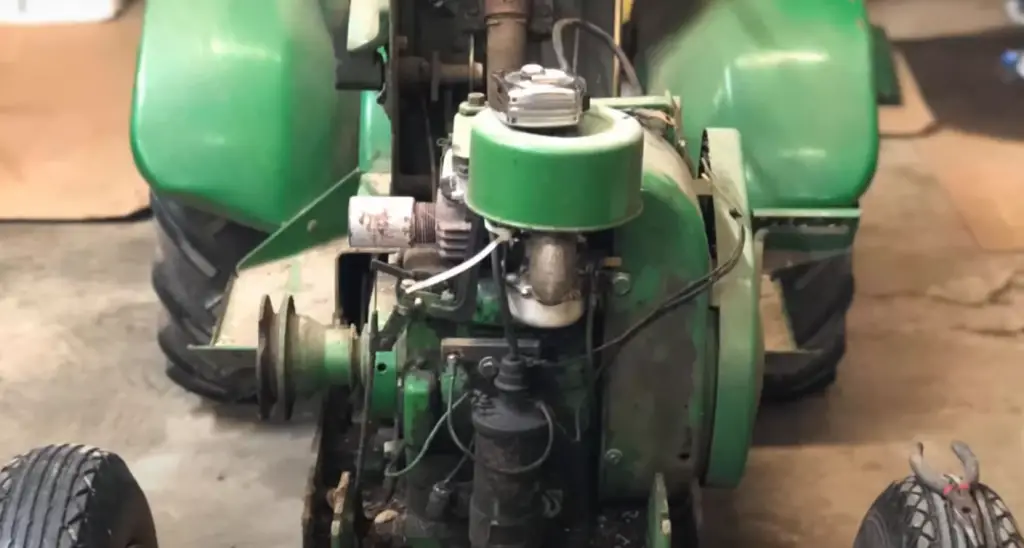
Keep in mind that even if your tractor is capable of pulling heavy objects, you should always use caution when doing so. Make sure the area ahead of you is clear and free of any obstacles that could cause damage to your tractor or injury to yourself. Also, be aware of your surroundings and take care not to drive too close to edges or drop-offs.
Enhance it with accessories
Obviously, the primary function of a garden tractor is to pull things. But that doesn’t mean you can’t add some accessories to make your tractor more versatile.
Wheelie Bars
One popular accessory is wheelie bars. Wheelie bars are devices that help prevent a vehicle from flipping over backwards during acceleration. They work by providing a pivot point for the rear of the vehicle, allowing it to “lift” the front wheels off the ground.
There are many different designs of wheelie bars, but they all serve the same purpose. Some wheelie bars are adjustable, which allows you to fine-tune how much weight is transferred to the rear wheels. This can be helpful if you’re trying to achieve a certain effect, such as making your vehicle do a “wheelie.”
Kill switch
A kill switch is a safety feature that shuts off the engine in case of a problem. It’s usually located on the steering column or dashboard, and you should have one in your tractor. If your engine stalls or dies for any reason, the kill switch will ensure that it doesn’t start up again until you’ve fixed the issue.
Most garden tractors don’t come with a kill switch installed, so you’ll need to add one yourself.
Pulling tires
Pulling tires are a type of tire that is designed for pulling heavy objects. They are usually made of rubber and have a tread pattern that helps grip the ground. Pulling tires can be used on any type of vehicle, but they are most commonly used on trucks and tractors.
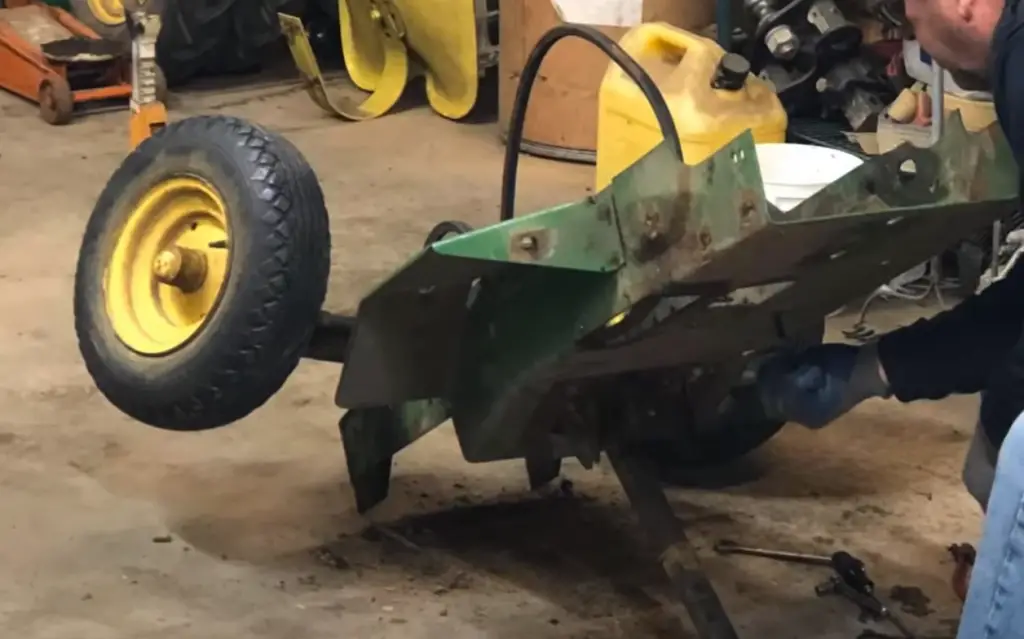
Most pulling tires are made of a soft rubber compound and have a tread pattern that is designed to grip the surface of the track. The goal is to provide as much traction as possible so that the tractor can pull the sled down the track. Some tires even have spikes or studs on them to help with traction.Some people think that any old tire will do for pulling, but this is not necessarily true. Tires that are too hard will not provide enough traction and could cause the tractor to slip or slide. Tires that are too soft will wear out quickly and may even come apart while you are pulling. It is important to find tires that are specifically designed for pulling garden tractors. [1]
FAQ
Can a garden tractor be used as a pulling tractor?
Yes, a garden tractor can be used as a pulling tractor. However, you will need to make sure that the tractor is powerful enough to pull the load that you intend to put behind it. You will also need to make sure that the tires on the tractor are in good condition and are properly inflated.
It is definitely possible to modify your garden tractor in a way it could reach up to 53 of horsepower, hence be viable for pulling tasks.
What engines do they use in tractor pulling?
The engines used in tractor pulling are typically high-powered, modified versions of agricultural engines. The most common engine modifications include increasing the displacement and adding forced induction.
How does a tractor pull work?
A tractor pull is a competition in which modified farm tractors compete to see who can pull the heaviest load for a given distance. The object of the game is to pull the sled, or weight transfer device, along with the attached weights, as far as possible.
The sled is connected to the back of the tractor by a chain, and it has a concrete block on it that weighs several thousand pounds. The goal is to see how far you can pull this heavy sled without stopping.
How do you set up a tractor to pull?
There are a few things you’ll need to do to set up your tractor for pulling. First, you’ll need to make sure that the rear end of the tractor is properly weighted down. This will help give the tractor traction and prevent it from tipping over when you’re pulling something heavy.
Next, you’ll need to attach whatever it is you’re going to be pulling (a trailer, for example) to the back of the tractor. Make sure that the hitch is secure and that all the safety chains are in place.
Useful Video: Pulling Lawn Tractor Build
Conclusion
Building a pulling garden tractor can be a fun and rewarding project. However, it is important to consider your budget and the size of your property before beginning your build. Additionally, make sure to select an engine that is powerful enough to handle the loads you anticipate needing to pull. Finally, don’t forget to wear the proper safety gear when operating your tractor. However, as you can see from this article, you really only need to buy a garden tractor and re-adjust it to make it work for pulling purposes. With a bit of creativity, you can save yourself a lot of money and still have a great time pulling your loads around. Thanks for reading! We hope this guide was helpful. If you have any questions or comments, please feel free to leave them below. Until next time, happy building!
References:
- https://smoothyard.com/how-to-build-a-pulling-garden-tractor/





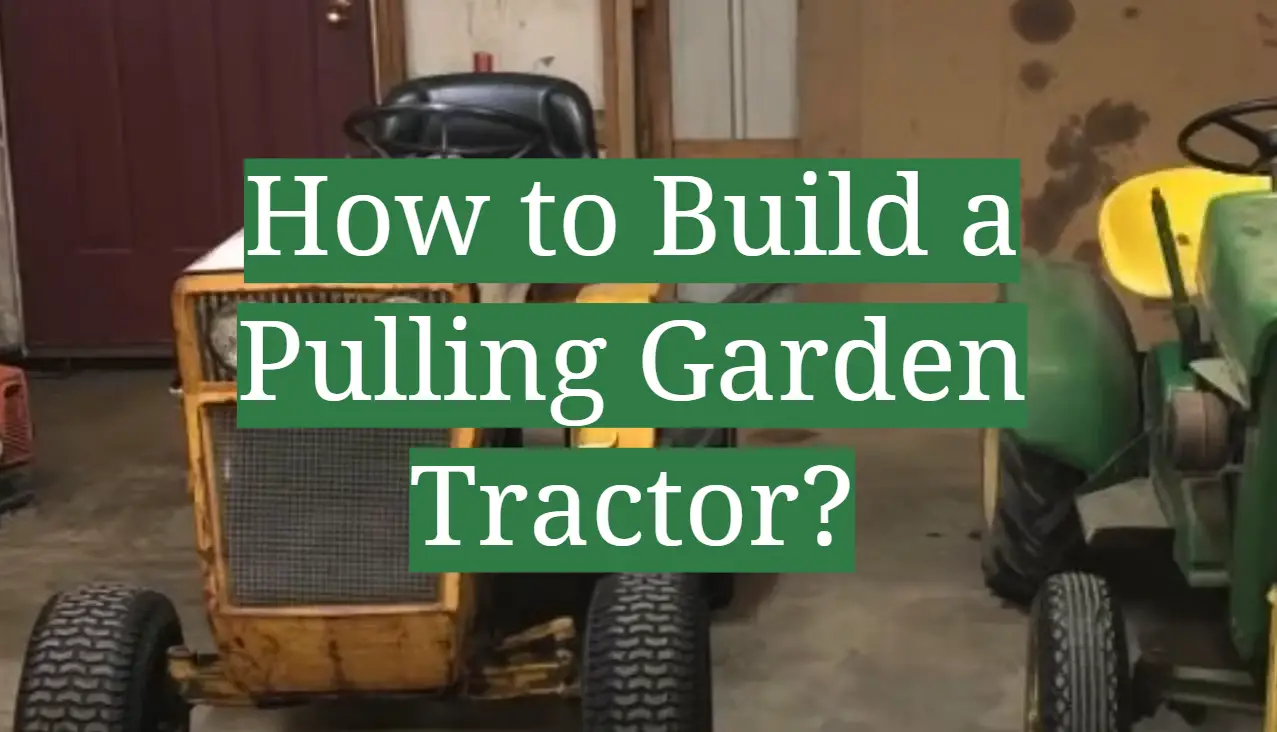




Leave a Reply
View Comments